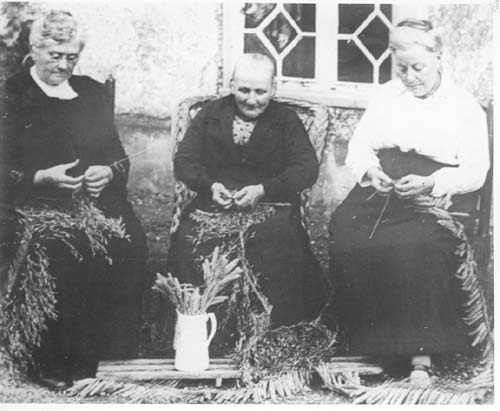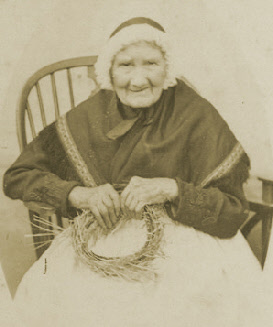


©2015 Deborah Richardson





Privacy Policy
Copyright




A major cottage industry in the villages of Bedfordshire was the production of straw plait which was stitched into hats.
Like the lace trade, this industry was practiced in individual's homes, and by both sexes and all ages. It did not pay much and was arduous, often boring, work. However, it provided a means of income for even the poorest of Turvey's villagers. It also had the advantage of being a more portable industry than lace making -
The straw was brought in from areas like the Chilterns, Essex, Berkshire and Suffolk. It was pushed through a wooden splitter to produce thin enough strips to work with. From about 1800 machines were used to split the straw which must have sped the process up no end.
If you have ever plaited some string or thread then you may well have tied one end of the three thread bundle to something and then plaited towards yourself. Interestingly, the straw plaiters of Bedfordshire worked away from the body, the spare straw being held under the left armpit. When she need more straw, she would grasp a strip with her teeth, suck it for a while to dampen it and then it would stick to the plaited strip that was running out. This action gave many plaiters a characteristic
permanent scar at the corner of the mouth.
There were many designs used in the plaits, from
Brilliant which was a simple looking but fiendishly
difficult pattern to get perfect, to much more
ornate designs, with names like wagon wheel,
three-


Straw Plait in Turvey
For more information on the straw plait trade in Bedfordshire I recommend the following websites:
English Heritage -





